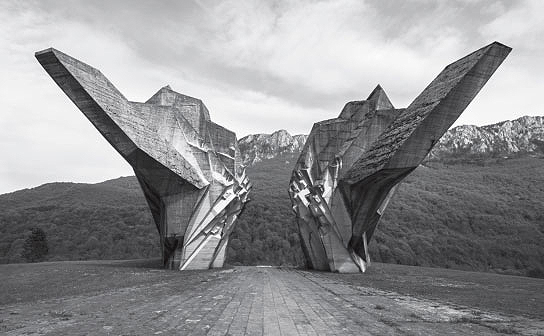
These Brutalist War memorials have very brutal back stories
World War II hit the former Yugoslavia hard and it has many poignant concrete creations to commemorate it
In Yugoslavia, Brutalist architecture was meant to create a bold, new, post-war world. Visitors to the exhibition, Toward a Concrete Utopia: Architecture in Yugoslavia, 1948–1980, currently on display at the Museum of Modern Art in New York, can see how this socialist state, outside the Eastern Bloc, tried to reconfigure the way its citizens lived, worked, shopped and relaxed, all through a striking architectural programme.
Yet Brutalism also helped the people of Yugoslavia remember – in quite a particular, state proscribed way – its recent past. The region suffered bitterly during the Second World War, with many ordinary citizens fighting the Fascists as part of a bloody resistance movement. As the country rebuilt itself, under the leadership of former resistance fighter Josip Broz Tito, it also built a series of bold and, at times beautiful war memorials, ennobling those earlier struggles. Here's how our new Atlas of Brutalist Architecture describes some of the best.
Battle of Sutjeska Memorial, Sutjeska National Park, Bosnia and Herzegovina, 1917 by Miodrag Živković (above) This wing-like work, about two hours south-east of Sarajevo, marks one of the bloodiest, and most significant battles fought by the Yugoslav Partisans, one of Europe’s most effective resistance forces of World War II. “This essentially abstract monument can be found in Sutjeska National Park in Bosnia and Herzegovina,” explains our Atlas. “Designed by the sculptor Miodrag Živković in 1971, the structure was erected to remember the difficulties of World War II’s Operation Fall Schwarz in 1943, known as the Battle of the Sutjeska, where around 7,500 people were killed, mostly partisan fighters who could not escape the German troops.”
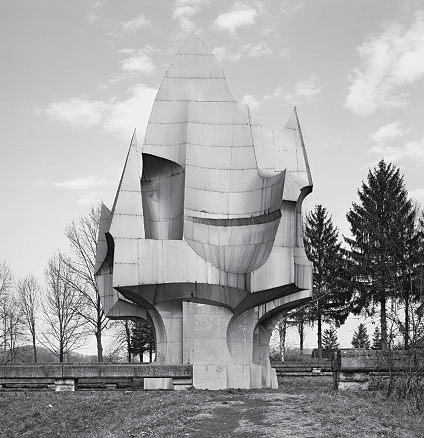
Šušnjar Memorial Complex, Sanski Most, Bosnia and Herzegovina, 1971, by Petar Krstić This beautiful, flame-like creation, like many other memorials in the former Yugoslavia, commemorates a bloody battle fought during World War II – in this case a series of civilian uprisings against Axis powers that occurred in Sanski Most and its surroundings during 1941. “The sculptural element is composed of panels of aluminium that are shaped to recall an abstract flame-like form,” says our new Atlas. “Around the fiery silver centre, a series of rectilinear bands constructed of tubular concrete profiles were arranged.”
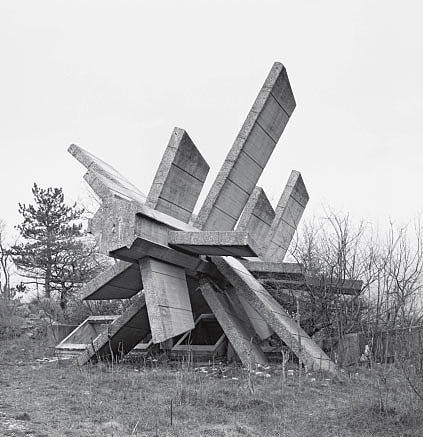
Monument to Croatian Victory, Knin, Croatia, 1969, by Vojin Bakić This ruined concrete creation – built to mark another bitter battle against Axis forces, this time fought in the winter of 1944 – once towered 25 m (82 ft) tall over the countryside. “Completed in 1969, its designer was Vojin Bakić, one of Yugoslavia’s most prominent sculptors,” explains the Atlas of Brutalist Architecture. “He created several powerful and moving monuments during the 1960s, and some, including this one, were torn down following the political turmoil of the 1990s, viewed as symbols of a defunct regime.”
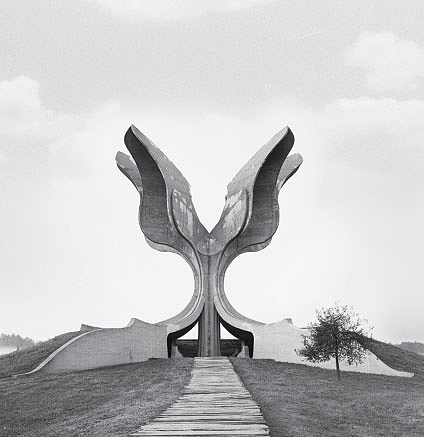
Flower Monument, Jasenovac Memorial Site, Croatia, 1966, by Bogdan Bogdanović The war stories in this part of the world aren't all glorious. Italy and Germany backed the wartime Independent State of Croatia, which in turn founded a concentration camp in Jasenovac, that has been labeled the “Auschwitz of the Balkans". This beautiful, flowing form - created to mark those who died at Jasenovac - wasn’t a popular commission at the time. “Jews, Serbs, Romani and Croats had been murdered at the camp,” explains the Atlas. “Because it was steeped in political and national shame, it was only reluctantly included in President Tito’s memorials programme. Yugoslavia’s Central Committee of War Veterans Organizations chose Bogdanović’s proposal, which was arresting for its towering concrete flower and undulating topography.”
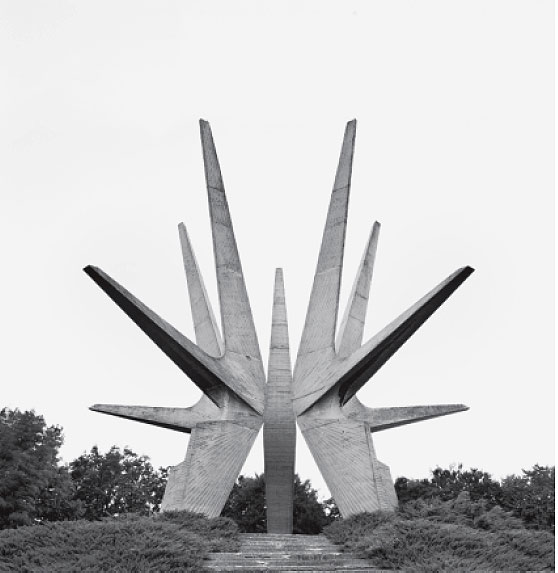
Monument To The Fallen Soldiers Of The Kosmaj Partisan Detachment, Kosmaj, near Belgrade, Serbia, 1970, by Vojin Stojić and Gradimir Medaković This starry monument has a thrilling, war-movie-style back story, as the Atlas of Brutalist Architecture explains. “This star-shaped monument honours partisan soldiers from the Kosmaj and the Sava regions of former Yugoslavia, who resisted the invading Axis forces of Germany and Italy during the National Liberation War (World War II). It was at this spot, 55 km (34 miles) south of Belgrade, that two groups of partisans, one from Kosmaj and the other from Sava, met in secret and pledged to join forces.”
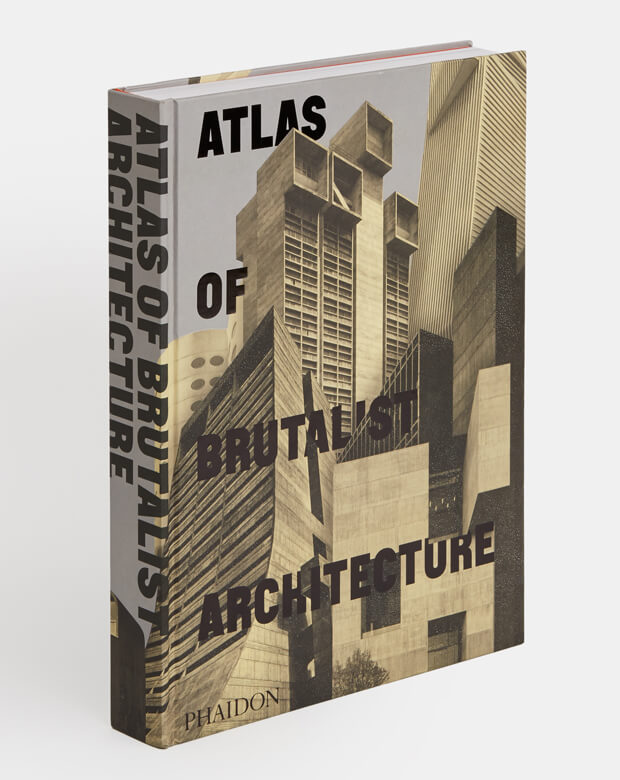
Keen to see more brutalist architecture of every kind? Then get our new Atlas of Brutalist Architecture. Presented in oversized format with a specially bound case with three-dimensional finishes, Atlas of Brutalist Architecture conveys the power and strength of over 850 Brutalist buildings - including new, old, demolished and threatened - in over 100 countries featuring the work of nearly 800 architects. the world's finest examples of Brutalist architecture brought to life through 1000 beautiful duotone photographs in one BIG, bold and truly beautiful book. Get out new Atlas of Brutalist Architecture here.